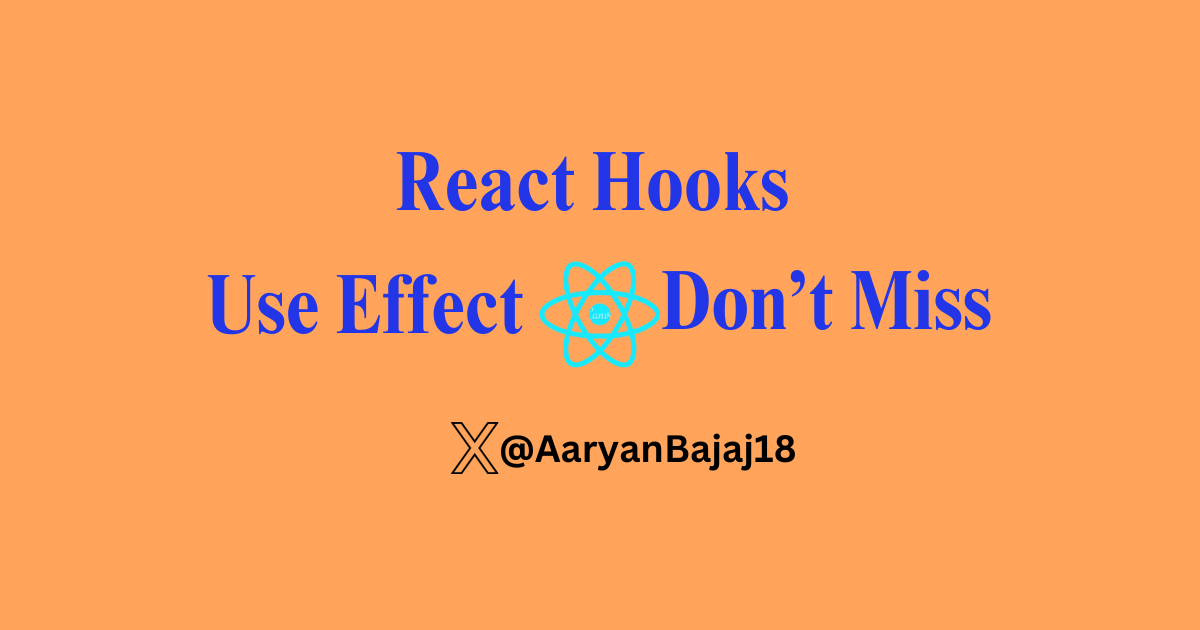React useEffect Hook in Real Life 💯
 AARYAN BAJAJ
AARYAN BAJAJ
Introduction
In the dynamic world of React development, mastering hooks, especially the useEffect hook, is akin to becoming a maestro of side effects. Just as a smart home adjusts seamlessly to its environment, useEffect enables React components to respond intuitively to changes. This blog post explores the practical applications of useEffect through real-life analogies, making it simpler to grasp for beginners and seasoned developers alike.
Mastering Side Effects with useEffect

Imagine living in a smart home where lights adjust based on the time of day, temperature controls kick in based on the weather outside, and your favorite music plays as soon as you step in. This is what useEffect does for your React components. It listens to changes in your component's environment and reacts accordingly, making your components as responsive and intuitive as a state-of-the-art smart home.
Fetching Data Like a Newsroom Ticker
The real power of useEffect shines when it fetches data. Picture a newsroom where the latest updates are constantly displayed on a ticker. By using useEffect to sync your React components with APIs, you ensure that your user interface updates dynamically, just like a news ticker that never misses a beat. This keeps your application's data fresh and relevant, enhancing user experience dramatically.

Keeping useEffect Clean: Lessons from a Gardener
Maintaining clean code in useEffect is like a gardener who keeps their garden pristine. It's crucial to clean up effects and manage dependency arrays wisely. A gardener trims overgrown branches and removes weeds; similarly, cleaning up effects prevents memory leaks and ensures that your components perform optimally. By using dependency arrays effectively, you tell your component exactly when to react, minimising unnecessary updates.

Complex Scenarios: Mixing Hooks Like a Real-Time DJ
Combining useEffect with other hooks can handle more complex scenarios, similar to a DJ mixing tracks in real time. For instance, integrating useEffect with useState or useContext can manage and sync complex states and contexts, much like a DJ keeps the dance floor energized by syncing beats and rhythms. Whether you're dealing with live data feeds, real-time inputs, or interactive user interfaces, useEffect helps keep your components in harmony.

Conclusion
The useEffect hook is a powerful tool for managing side effects in your React applications. By understanding and implementing it correctly, developers can enhance the responsiveness and performance of their applications. Just like the analogies we explored, from smart homes to gardeners, and from newsrooms to DJs, useEffect enables developers to create more intuitive and dynamic user experiences. Embrace the power of useEffect and watch your components come to life!
Subscribe to my newsletter
Read articles from AARYAN BAJAJ directly inside your inbox. Subscribe to the newsletter, and don't miss out.
Written by

AARYAN BAJAJ
AARYAN BAJAJ
Hi Everyone 👋🏻 , I'm Aaryan Bajaj , a Full Stack Web Developer from India(🇮🇳). I share my knowledge through engaging technical blogs on Hashnode, covering web development.